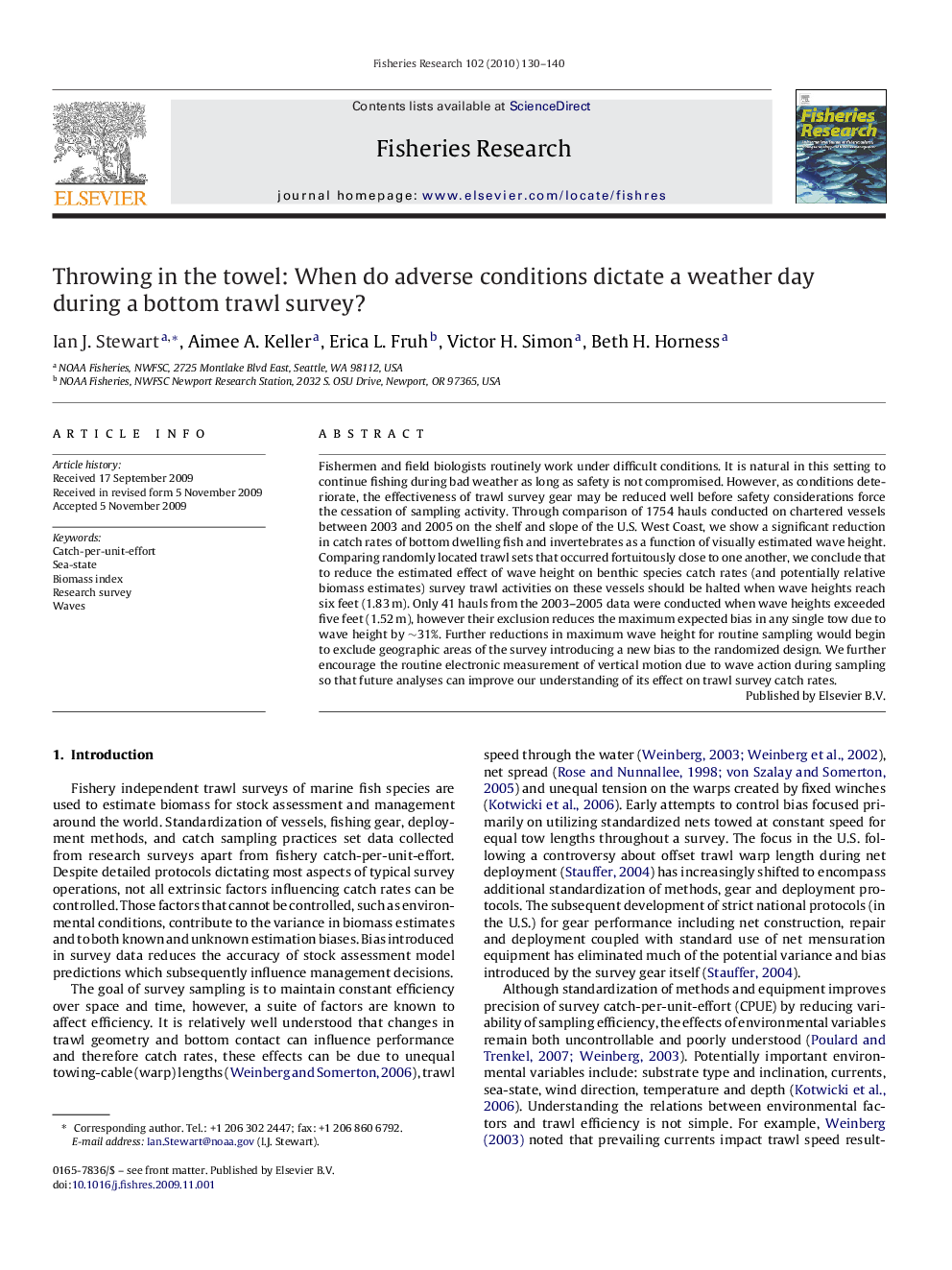| Article ID | Journal | Published Year | Pages | File Type |
|---|---|---|---|---|
| 4543789 | Fisheries Research | 2010 | 11 Pages |
Fishermen and field biologists routinely work under difficult conditions. It is natural in this setting to continue fishing during bad weather as long as safety is not compromised. However, as conditions deteriorate, the effectiveness of trawl survey gear may be reduced well before safety considerations force the cessation of sampling activity. Through comparison of 1754 hauls conducted on chartered vessels between 2003 and 2005 on the shelf and slope of the U.S. West Coast, we show a significant reduction in catch rates of bottom dwelling fish and invertebrates as a function of visually estimated wave height. Comparing randomly located trawl sets that occurred fortuitously close to one another, we conclude that to reduce the estimated effect of wave height on benthic species catch rates (and potentially relative biomass estimates) survey trawl activities on these vessels should be halted when wave heights reach six feet (1.83 m). Only 41 hauls from the 2003–2005 data were conducted when wave heights exceeded five feet (1.52 m), however their exclusion reduces the maximum expected bias in any single tow due to wave height by ∼31%. Further reductions in maximum wave height for routine sampling would begin to exclude geographic areas of the survey introducing a new bias to the randomized design. We further encourage the routine electronic measurement of vertical motion due to wave action during sampling so that future analyses can improve our understanding of its effect on trawl survey catch rates.
